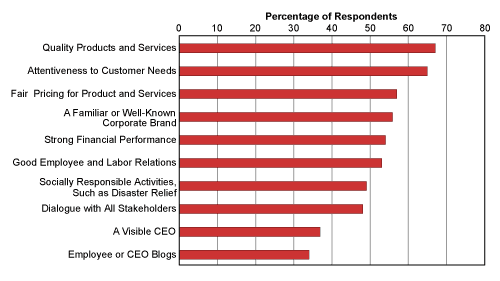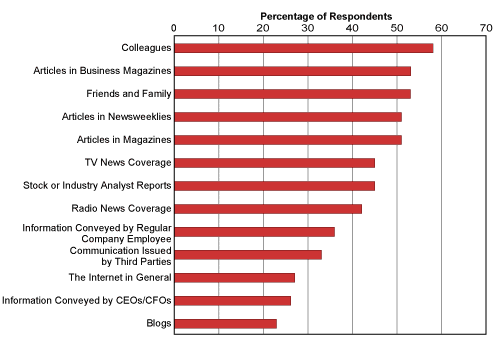
The link between individual Six Sigma projects and the ultimate customer is sometimes difficult because of the separation between the two, and sometimes because of the vagueness of statements at the strategic level. It was interesting and relevant to see the results earlier this year from the annual Edelman Trust Barometer, a survey of nearly 2,000 opinion leaders in 11 countries.
The survey’s opinion leaders were college graduates between ages 35 and 64 earning at least US$75,000 per year. The results show that 75 percent of them would refuse to do business with a company they do not trust. This is a great result and clearly would get the attention of senior management. If this survey was part of a Six Sigma project, the next question would be to ask how to define and measure trust. In the multidimensional world of customer surveying, there are a number of sophisticated statistical tools that help to define the characteristic behavior of a company that is “trustworthy.” This also can be done using a quality functional deployment.

It was interesting to see that the most important factor in building trust was “quality products and services.” This was way ahead of strong financial performance or a visible CEO. Gordon Fisher, one of the panelists and the publisher of the National Post, a national newspaper in Canada, gave a definition of quality in the newspaper industry as a combination of the internal measure of accuracy of reporting, but augmented that with a truly customer-centric view of getting the newspaper onto the doorstep, on time and dry. That is a sentiment most can appreciate rainy or snowy mornings.
Given this information, the next question to customers would be, “How do you form this opinion about trustworthiness? Who do you trust? What are the important factors that influence this ephemeral characteristic? Where do you get your information?” The results show important factors for the design of an advertising campaign and corporate communication plan.

The largest impact is from people identified as colleagues, or people like the respondents themselves. Failing any access to this group, a company would use this to design a campaign around spokespeople that would appeal to the target audience. Consider the latest campaign from Dove soap. Instead of using stick-insect type models with pouting expressions, or adolescent Zoolander types in Armani suits, they use what are seen as “normal human beings” or “people like me.” According to the survey, trust in “people like me,” has increased from 20 percent to 68 percent during the last year in the United States.
One member of the panel echoed the necessity and financial benefit of including these notions in the design of a corporate communication plan. Steve Wuthmann, vice president of human resources at Parmalat Canada, noted that $18 billion fraud case against the company’s Italian parent company had little effect on Parmalat Canada. That, he said, was owing to a repeated, focused message designed to build and maintain trust with customers, suppliers and employees on an ongoing basis.
Once again, this focus on the customers appears as the most important aspect of continued success of a company. A Fortune magazine article (Feb. 20, 2006 issue) had an article about Eddie Lampert, a billionaire hedge fund manager, richer than Warren Buffet at the same age. He engineered a takeover of Sears about a year ago and the stock has since risen by 30 percent. His method for picking stocks is not quite like other hedge fund managers. Before he put a penny into AutoZone, he reportedly visited hundreds of the auto-parts retailer’s outlets and had one of his analysts spend six months calling on hundreds of stores posing as a demanding customer.
How often would a typical CEO spend that much time in the customers’ shoes?